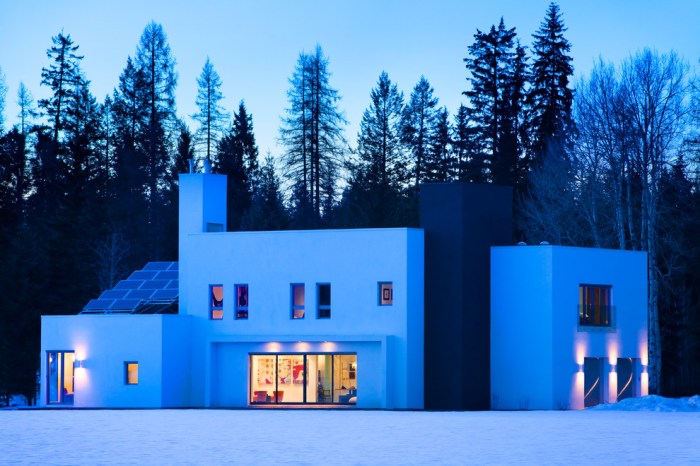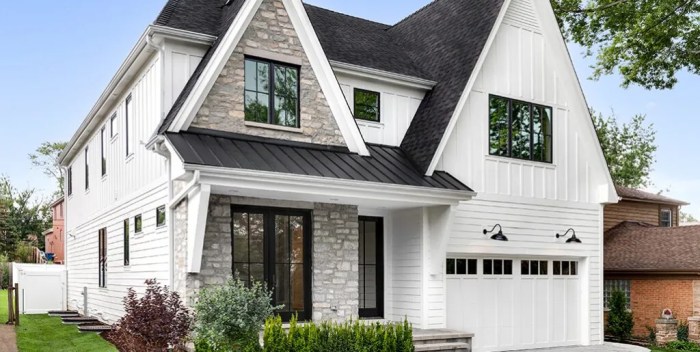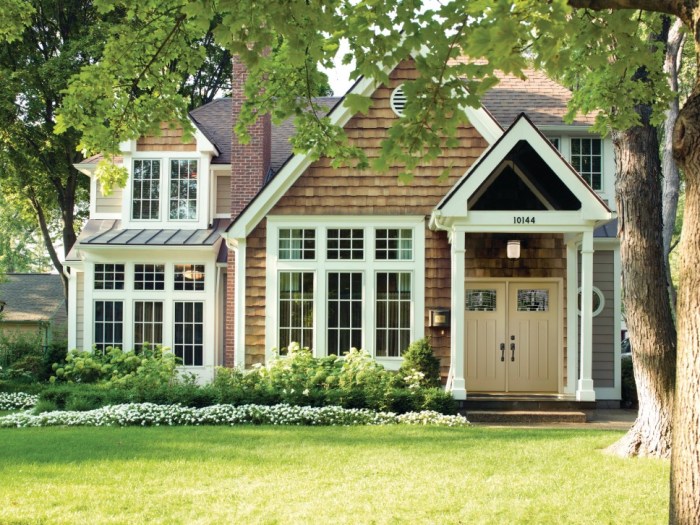Energy efficient home exteriors pave the way for a more sustainable and cost-effective living environment. From choosing the right materials to implementing smart design features, this guide explores the key aspects of creating an energy-efficient home exterior. Dive in to discover how you can reduce your utility bills and minimize your environmental footprint with these practical tips and insights.
In the following sections, we’ll delve into the importance of energy efficiency, explore different materials and design elements, and learn how to maintain the optimal performance of your home’s exterior.
Importance of Energy Efficient Home Exteriors
Energy efficient home exteriors are crucial for several reasons. They not only help in reducing energy consumption but also contribute to lower utility bills and a decreased environmental impact.
Benefits of Energy Efficient Materials
- Using high-quality insulation can prevent heat loss in the winter and keep the house cool in the summer, reducing the need for heating and cooling systems.
- Installing energy-efficient windows with multiple panes and low-emissivity coatings can reduce heat transfer, keeping the interior comfortable without overworking HVAC systems.
- Opting for reflective roofing materials can help in reducing heat absorption, thus lowering the cooling load on air conditioners during hot weather.
Financial and Environmental Impact
Energy efficient home exteriors can lead to significant savings on utility bills over time. By reducing energy consumption, homeowners can also lower their carbon footprint and contribute to a more sustainable environment.
Materials for Energy Efficient Home Exteriors

When it comes to energy efficient home exteriors, the choice of materials plays a crucial role in ensuring optimal insulation and reducing energy consumption. Various materials are available in the market, each with its own set of benefits in terms of energy efficiency and durability.
Insulated Siding
Insulated siding is a popular choice for energy efficient home exteriors. It consists of foam insulation attached to the back of the siding panels, providing an extra layer of protection against heat loss or gain. This type of siding helps to maintain a consistent indoor temperature, reducing the need for heating or cooling.
Energy-Efficient Windows
Energy-efficient windows are another essential component of energy efficient home exteriors. These windows are designed to minimize heat transfer through glass panes, frames, and seals. They help to keep the indoor temperature stable, reduce drafts, and prevent energy loss, ultimately leading to lower energy bills.
Fiber Cement Siding
Fiber cement siding is a durable and low-maintenance option for energy efficient home exteriors. It is resistant to rot, fire, and pests, making it a long-lasting choice. Additionally, fiber cement siding provides excellent insulation properties, helping to improve the overall energy efficiency of a home.
Wood Cladding
Wood cladding is a traditional yet effective material for energy efficient home exteriors. Wood has natural insulating properties, which can help regulate indoor temperatures. However, proper maintenance is required to prevent rot or decay over time.
Design and Features for Energy Efficiency
When it comes to energy efficiency in home exteriors, the design and features play a crucial role in reducing energy consumption and costs. By incorporating key elements that enhance insulation, orientation, shading, and natural light, homeowners can significantly improve the overall energy efficiency of their homes.
Key Design Elements for Energy Efficiency
- Proper Insulation: Ensuring that walls, roofs, and windows are well-insulated helps to maintain a consistent indoor temperature, reducing the need for heating and cooling.
- Orientation: Designing the layout of the home to take advantage of natural sunlight and prevailing winds can help decrease the reliance on artificial lighting and ventilation systems.
- Shading: Incorporating features like overhangs, awnings, and trees for natural shading can prevent excessive heat gain in the summer, reducing the need for air conditioning.
Importance of Features for Energy Efficiency
- Overhangs: Providing overhangs above windows and doors can block direct sunlight in the summer while allowing sunlight to enter during the winter, helping to regulate indoor temperatures.
- Reflective Roofs: Choosing roofing materials with high solar reflectance can reduce heat absorption, keeping the home cooler and decreasing the load on air conditioning systems.
- Landscaping: Utilizing strategically placed trees and shrubs for shading can not only enhance the aesthetic appeal of the home but also contribute to reducing energy consumption by providing natural cooling.
Innovative Designs for Energy Savings
- Optimizing Natural Light: Incorporating features like skylights, solar tubes, and large windows with low-emissivity coatings can maximize natural light, reducing the need for artificial lighting during the day.
- Enhancing Ventilation: Implementing cross ventilation through the use of operable windows, vents, and ceiling fans can promote air circulation and cooling without relying solely on air conditioning.
Maintenance and Upkeep for Energy Efficient Exteriors

Regular maintenance is crucial for preserving the energy efficiency of your home’s exterior. By following a maintenance schedule and conducting inspections and repairs as needed, you can ensure that your energy-efficient features continue to perform optimally over time.
Landscaping
Proper landscaping can contribute to the energy efficiency of your home’s exterior. By strategically planting trees and shrubs to provide shade during hot summer months, you can reduce the need for excessive cooling. Additionally, maintaining a well-kept lawn and garden can help with insulation and moisture control, further enhancing energy efficiency.
Paint
Choosing the right paint for your home’s exterior can also impact its energy efficiency. High-quality, reflective paint can help reduce heat absorption, keeping your home cooler in warm weather. Regularly inspecting the paint for signs of wear and tear, and repainting when necessary, can help maintain the protective barrier that contributes to energy efficiency.
Sealants
Sealants play a crucial role in maintaining the energy efficiency of your home’s exterior. Inspect windows, doors, and other openings regularly for air leaks and drafts, and seal them as needed to prevent energy loss. Properly sealed gaps and cracks can help improve insulation and reduce the workload on heating and cooling systems, ultimately saving energy.
Final Thoughts

As we wrap up our discussion on energy efficient home exteriors, remember that small changes in your exterior design can lead to significant savings and a healthier planet. By incorporating energy-saving practices and materials, you not only enhance the comfort of your home but also contribute to a more sustainable future.
Start your journey towards a greener home today!
Detailed FAQs
What are the benefits of energy efficient home exteriors?
Energy efficient home exteriors can help reduce utility bills, minimize environmental impact, and enhance the overall comfort of your living space.
Which materials are suitable for energy efficient exteriors?
Materials like insulated siding and energy-efficient windows are ideal for improving energy efficiency in your home.
How can landscaping contribute to maintaining energy efficiency?
Strategic landscaping can provide natural shading, reduce heat gain, and improve the overall insulation of your home.

